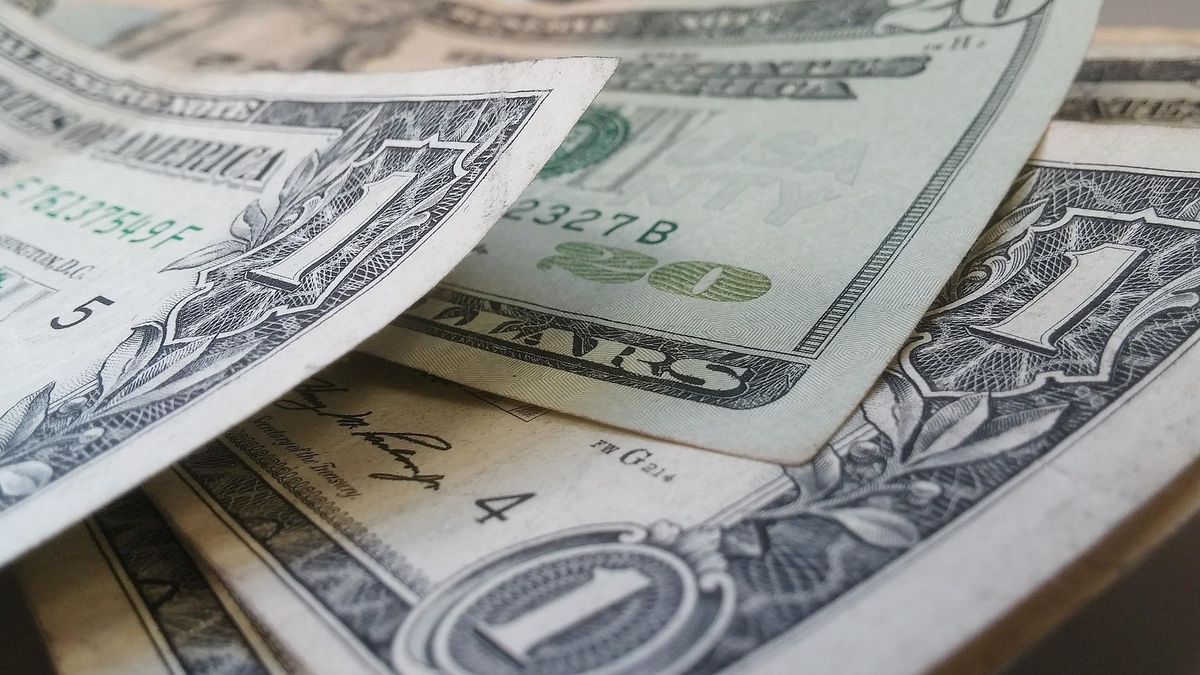“It is estimated that the average daily intervention is US$30 million and, throughout September, it added about US$720 million,” the economist calculates Federico Glustein in dialogue with Ambit. And Portfolio Personal Inversiones (PPI) agree that it sold approximately US$750 million in the bond market during the month of September to contain the CCL and the MEP.
According to a report from the brokerage house, in each round of the last week of September, the BCRA accelerated the tone of its intervention, and set a new post-STEP record day after day. In fact, on the first day of the month, which was this Monday, October 2, I am looking to intervene heavily, “theoretically, with about US$60 million,” according to a market source.
The BCRA strategy for financial dollars
This Tuesday, the CCL was quoted at $838, blue closed at $810 and the MEP at $720.6 and the market indicated that they did not see a strong intervention from the BCRA on the day, given that it rose more than usual, about $10.8, against a jump of $8.6 in the CCL and $10 in the blue. City analysts consider that these numbers could be reflecting a lighter position of the BCRA.
Thus, everything indicates that, just as he anticipated he would do several months ago, The Central has been managing its participation in the bond market to maintain the gap between parallel dollars at levels that are convenient to avoid a run between now and the October 22 elections.
This is what the economist and director of Consultora Sarandí explains to Ámbito, Sergio Chouzawho states that “the BCRA’s interventions aim to give a more harmonious and stable trend to the dollar market accessed by companies and formal savers, so that expectations are not further disrupted.”
October, a difficult front for the BCRA
Therefore, PPI anticipated that, just 20 days before the general elections, for the brokerage house “it will be essential to closely follow the presence of the Central Bank in the bond market.”
The big problem, according to the economist and director of MyR Consultores, Fabio Rodriguez, is that the intervention in the MEP generates serious damage to the BCRA balance sheet on the asset side. “It is a variable that requires between $30 million and $50 million per day to contain a financial dollar that, ultimately, rises between 8% and 10% in the same month.”
And remember, this level of spending per month occurs in a context in which the reserves are in a complex situation, beyond the fact that the BCRA achieved a fleeting recomposition due to the IMF disbursement in August and has been managing to buy dollars thanks to the soybean dollar. 4. “He pays money that he does not have enough for a patchwork policy that seeks to avoid a sharp jump before October 22, but which has increasing costs and intensifies the doubt about what will happen after the elections,” Rodríguez warns.
In the same sense, Chouza points out, who points out that “although it is true that, if the free financial dollar were more volatile and unstable at this time, the mismatch of expectations would be much more complex, the problem is that this intervention is done at the expense of the BCRA reserves.”
The effect on reserves is worrying
Let us remember that The way of intervention is that the BCRA sells bonds against pesos, repurchases them with dollars and maintains the position in order to lower the price by counteracting the demand for the dollar, but uses resources from the reserves.
Thus, Chouza recognizes that “the operation effect aims to ensure that the expectations of the financial dollar do not skyrocket and the macro parameters of the economy can be minimally sustained, so it is a contractive strategy in monetary terms, but it is not virtuous, but rather “It is a band-aid that is put on at a moment of extreme weakness.”
“The acceleration as we approach the October General elections is notable,” they highlight. from PPI. And they indicate that the peak of greatest intervention was observed last Friday, when the Central released US$65.9 million, marking a new daily record since the PASO.
A pincer movement with the soy dollar 4
Although the Government seeks to compensate for this dynamic with the extension of the soybean dollar 4, which includes a key novelty in this sense: the obligation to deposit 25% of the settlement (which until now was freely available) through the CCL dollar market. This was arranged in the Decree 492/2023which among other aspects, extended it and implemented this measure, which will help control the price of the dollar used by companies.
However, the pre-election dollarization pressure will be strong, which is why, from PPI, they consider that It will be essential to closely monitor the presence of the Central Bank in the bond market going forward. And they anticipate that, with the uncertainty increasingly present in the run-up to the general elections, and to the extent that the net liquidation of currencies in the official exchange market loses pace (despite the fact that the soybean dollar export increase 4 and the Vaca Muerta dollar began to function).
They anticipate that there is likely to be “an acceleration of intervention in the coming weeks that could be similar to what we observed before the primaries,” when they reached a daily average of US$97.2 million.
The big warning sign that appears in this sense is that the Government will once again fail to meet the goals it agreed with the International Monetary Fund (IMF) regarding net reserves, which, according to Rodríguez, are negative by around US$4.8 billion. today. And, although the BCRA closed September with a positive balance in the official market of US$527 million, a month in which it managed to buy dollars every day, it lost more than US$1 billion gross reserveswhich, three days into October, stands at around US$26.6 billion, its lowest level since 2006.
Source: Ambito
I am a 24-year-old writer and journalist who has been working in the news industry for the past two years. I write primarily about market news, so if you’re looking for insights into what’s going on in the stock market or economic indicators, you’ve come to the right place. I also dabble in writing articles on lifestyle trends and pop culture news.




